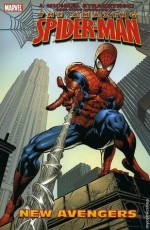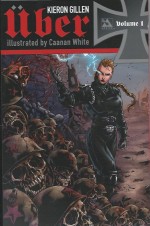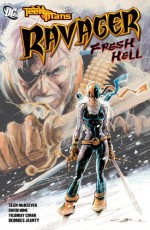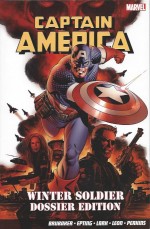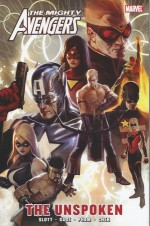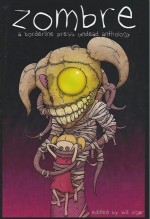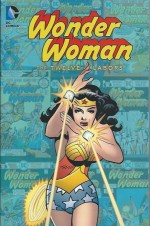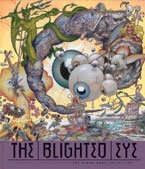
By many and various (Fantagraphics Books)
ISBN: 978-1-60699-695-9
When I talk about the field and art form of comics the intent is generally to celebrate and advertise the triumphs and talents of writers and artists – or maybe colourists, letterers or even publishers – but almost never about consumers.
However there are people who just read comics and there are those whose passion for the medium goes even deeper. These individuals have as much – or maybe even more – to do with shaping and promoting our medium than all the rest…
Paramount amongst those is Glenn Bray, whose fascination for illustrated narrative encompasses comics, collector cards, film and wrestling ephemera, music, outsider art and in fact most aspects of popular culture.
He is a driven champion of modern creativity and amongst his greatest passions is an undiagnosed compulsion to collect original art.
Bray was in on the start of the Underground Commix revolution, smuggling comics to stores back when they were still illegal. He’s the guy who first brought Carl Barks out of retirement and bought his very first Duck painting, showed us young kids the astounding art of Basil Wolverton and won belated fame for retired sculptor, draughtsman and philosopher Stanislav Szukalski.
The inveterate fan’s been quietly amassing mementos and knowledge from his California home since 1965 and has subsequently become the premiere cultural archivist, educator, publisher and patron of some of the most influential artists in graphics and sequential art. He also cherishes the works of creators we’ve forgotten and those who should be famous but just aren’t.
Yet.
Moreover, by befriending, interviewing, recording and always freely sharing his collection and studies of the people he’s admired – and often supported – Bray established the basis for most of today’s scholastic and journalistic resources and records, used by practically all of us expounding and propounding the joys of comics and illustrative narrative.
This astounding monolithic hardback (410 gleaming, glossy 302 x 268mm pages with some eye-popping 6-stage fold-outs) is teeming with photos of people, places and things that have captivated the preserver of everything our bigoted teachers, pontificating, bastions of the Old Guard and smug Social Betters always told us had no worth, merit or value…
Most importantly of course (for us here at least) are his hundreds of examples of art – all shot here from the originals in Bray’s frankly unbelievable collection – a veritable museum (and feeling as heavy as one) of genius in your hands: a pantheon of comics achievement, each and every one gathered and preserved for only one reason: because Glenn liked it…
Illustration superstar Robert Williams’ historical biography ‘The Archive of Lost Souls’ starts the show, after which author and publisher Todd Hignite offers an informative commentary in ‘Who Enters Here Leaves Hope Behind’, but the true nature and devotion of the collector really comes through in ‘The Glenn Bray Interview’ by Doug Harvey (artist and Art Critic for the LA Times and Art Issues) before the true wonder unfolds in the exotic, eclectic, picture-packed pages which follow.
This is an imposing and shockingly beautiful compendium no lover of the medium could possibly ignore, and it’s not all Bray has in terms of Art, artefacts, funny books or ephemera. Perhaps there’s a sequel or companion compendium to come…
That’s how I usually wrap up one of these reviews and it should be enough to convince you to get The Blighted Eye immediately if not sooner, but I’d kick myself if I didn’t list the artists whose works appear here.
So, whether a single page and/or panel or many different pieces, each of these masters and journeymen deserve a mention and you can read on or stop here.
Charles Addams, Rick Altergott, Bob Armstrong, Boris Artzybasheff, Carl Barks (so wonderfully many), Art Bartsch, H.M. Bateman Hand Bellmer, Mark Beyer, Jack Bilbo, Gene Bilbrew, Mahlon Blaine, Al Bryant, R.O. Blechman and Charles Burns.
Ernesto Cabral, E.H. Caldwell Studio, Al Capp, Serge Clerc, Dan Clowes, Ron Cobb, Jack Cole (another host of stunning volume and variety), Astley David Montague Cooper, Robert Crumb, Xavier Cugat, Jack Davis, Gene, Kim and Simon Deitch.
Bray was instrumental in popularising the European Krampus tradition and ‘Devil Cards’ features a sub-exhibition of examples of the Christmas Devil by Kim Deitch, Coop, Bob Armstrong, Spain, Mark Beyer, Carol Lay, Charles Burns, Drew Friedman, Rick Griffin, Hunt Emerson, Jan Ross, Gary Leib, Robert Williams, Bill Ward, J.D. King, Evert Geradts, XNO, S. Clay Wilson, Crumb, Ever Meulen, Peter Pontiac, Savage Pencil, Norman Pettingill, Byron Werner & Karl Wills.
The greater precession resumes with Gustave Doré, Pascal Doury, Albert Durbout, Bill Elder, Vince Fago, John Fawcett, Al Feldstein, Virgil Finlay, Kelly Freas, lots more Drew Friedman, Ernst Fuchs, a wealth of Evert Geradts, Eugenie Goldschmeding Chester Gould and Vernon Grant.
Underground icon Justin Green is followed by a quartet of stylish noir book covers by Gerald Gregg and many pieces by boon companion Rick Griffin plus pieces by Bill Griffith, Milt Gross, George Grosz, Olaf Gulbrannson, V.T. Hamlin, Harman Ising Productions, Yoshifumi Hayashi, Geoffrey Hayes and tragic underground pioneer Rory Hayes.
There’s Russ Heath, Jaime Hernandez, George Herriman, Ryan Heshka, Al Hirshfeld, Alfred Hitchcock (yes really! Him!). Then see some Bill (Smokey Stover) Holman, Lawrence Hubbard, Graham Ingels, Cameron Jamie, Russ Johnson, Daniel Johnston, Andrew Jones, Kaz, Ota Keiti, Hank Ketchum, Frank King, Marian Konarski, Bernie Krigstein and the inimitable Harvey Kurtzman.
Stanley Link, Lippert Pictures, Bobby London, Travis Louie, Jay Lynch, Don Martin, Jefferson Machamer, Donald McGill, Otto Mesmer, Ever Meulen, Zach Mosely, Willard Mullin, Alan Odle, Jim Osborne and much, much Gary Panter.
A stunning selection of vintage Virgil Partch is followed by Mervyn Peake, Savage Pencil and Norman Pettingill. Dutch master Peter Pontiac follows, as does Richard Powers, George Price, Roger Price and Jacques Pyon as well as Gardner Rea, Bruno Richard, W. Heath Robinson and Charles Rodrigues.
See also Jan Ross, Big Daddy Roth, Antonio Rubino, Jenny Ryan and the iconoclastic Johnny Ryan. Bud Sagendorf, F. San Millan, Charles Schneider, Charles Schulz, Jim Shaw, Gilbert Shelton, Marc Smeets, Clark Ashton Smith, Otto Soglow, “Spain†Rodriguez, Irving Spector, Cliff Sterrett, G.E. Studdy, Joost Swarte, Stanislav Szukalski, Richard Taylor, Roy Tomkins, Jill Tipping, Tomi Ungerer and Irving Tripp & John Stanley.
Next follows another fascinating sub-section devoted to ‘Unknown Artists’ listed by a single nom-de-plume – just their work or no name – which includes Bubba ’69, Heilman, J. Ford, D.C. Lucchesi, J. Kennedy, Jaro, Kringo, Mr. Harrell Lee Littrel, P.J. McGivern, David Moore, Panchi, Dennis Rushton, R.H.L., Smith, E.A. Sojay and Weird Wanda (Doreen Ross).
Our voyage of discovery recommences with stuff from Jeffrey Vallance, Hans Van Bentem, Bob Van Den Born, Vica (Vincent Krazousky), George William Wakefield, Ray Walters, Bill Ward, Chris Ware, Byron Werner, a sublime spread of Ogden Whitney ‘Herbie’ pages, Gluyas Williams, Robert Williams, Skip Williamson, Karl Wills, Gahan Wilson, S. Clay Wilson, an apocalyptic selection of Basil Wolverton masterworks, Lawson Wood, Wallace Wood, Jim Woodring, XNO, cartoon colossus Art Young and Bob Zoell.
Surely after reading all that you need some great pictures to look at? So go buy the book and ease your Blighted Eye…
The Blighted Eye © 2014 Fantagraphics Books. All images © 2014 their respective creators or Estates where appropriate. All rights reserved.

